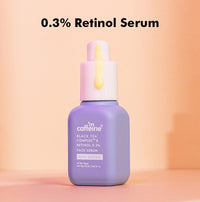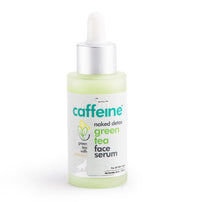Sunscreen remains one of the most misunderstood skincare products despite being essential for skin health. Many people question whether sunscreen is good for skin, while others avoid it based on misconceptions. The reality? Proper sunscreen usage forms the foundation of effective skin protection against premature aging, hyperpigmentation, and skin cancer.
This article cuts through common myths about sunscreen to help establish an effective sun protection routine. Understanding these misconceptions can transform how you protect your skin daily and prevent damage that accumulates over time.
Myth #1: Sunscreen Is Only Necessary on Sunny Days
The Dangerous Truth About Cloudy Days and UV Exposure
UV rays penetrate clouds with alarming efficiency—up to 80% of these damaging rays reach your skin even on overcast days. This explains why many people experience sunburn during cloudy weather when they've skipped sun protection.
UVA rays (the aging rays) penetrate glass and windows, affecting skin even during indoor activities or while driving. These rays maintain consistent strength year-round, regardless of temperature or season, making daily protection necessary.
Weather conditions that seem to provide natural protection can actually increase UV exposure:
-
Snow reflects up to 80% of UV rays, nearly doubling exposure
-
Water reflects up to 30% of UV rays
-
Sand reflects up to 25% of UV rays
Daily application of broad-spectrum sunscreen with at least SPF 30 provides essential protection regardless of weather conditions. The Green Tea Sunscreen SPF 50 PA+++ offers lightweight, everyday protection with antioxidant benefits that complement daily sun defense.
Myth #2: People with Darker Skin Don't Need Sunscreen
Why Melanin Isn't Enough Protection
While melanin provides some natural sun protection (approximately SPF 13 equivalent in darker skin tones), this level falls significantly below the recommended SPF 30 minimum for adequate protection. All skin types remain vulnerable to UV damage, regardless of melanin concentration.
Studies show concerning statistics regarding skin cancer diagnoses in darker skin tones. These cancers often receive delayed diagnosis due to the misconception that melanin-rich skin doesn't need protection, leading to more advanced disease stages at detection.
Beyond cancer prevention, sunscreen helps prevent:
-
Post-inflammatory hyperpigmentation (dark spots)
-
Uneven skin tone
-
Melasma
-
Premature skin aging
The Kombucha Hydra Repair Sunscreen provides SPF 50 protection suitable for all skin tones while addressing hydration needs with hyaluronic acid and ceramides.
Myth #3: One Application of Sunscreen Is Enough for the Day
Why Reapplication Matters More Than You Think
Sunscreen efficacy diminishes significantly after application due to specific factors:
-
Chemical breakdown: UV filters begin degrading upon sun exposure, with noticeable reduction in protection after 2 hours
-
Physical removal: Up to 85% of sunscreen gets removed through normal activities like touching your face, phone use, and clothing friction
-
Dilution by sweat: Perspiration dilutes active ingredients, reducing their concentration on skin
-
Water exposure: Even "water-resistant" formulations lose effectiveness after swimming or excessive sweating
Studies show most people apply only 25-50% of the recommended sunscreen amount (approximately 2mg/cm² of skin), further reducing protection levels. The reapplication schedule that maximizes protection:
-
Every 2 hours during continuous sun exposure
-
Immediately after swimming or sweating heavily
-
After towel drying
-
More frequently during peak UV hours (10am-4pm)
The Sun Bath SPF Body Sunscreen Spray 100ml simplifies reapplication with its spray format, making touch-ups practical throughout the day.
Myth #4: Sunscreen Causes Vitamin D Deficiency
The Science Behind Sunscreen and Vitamin D Production
Multiple clinical studies have demonstrated that regular sunscreen usage has minimal impact on vitamin D synthesis. Research published in the British Journal of Dermatology found no significant difference in vitamin D levels between regular sunscreen users and non-users over a summer period.
Several factors explain why sunscreen doesn't significantly block vitamin D production:
-
Most people apply insufficient sunscreen (less than the tested 2mg/cm²)
-
Areas commonly remain uncovered (hands, portions of arms and legs)
-
No sunscreen blocks 100% of UV rays
-
Brief incidental sun exposure provides adequate vitamin D synthesis
For those concerned about vitamin D levels, dietary sources and supplements offer safer alternatives than unprotected sun exposure:
-
Fatty fish (salmon, mackerel)
-
Fortified dairy products
-
Egg yolks
-
Mushrooms exposed to UV light
-
Supplements (under medical supervision)
Myth #5: Sunscreen Is Only for the Face
The Overlooked Danger Zones for Skin Cancer
Dermatologists report that the most common sites for skin cancer development include frequently exposed but rarely protected body areas:
-
Back of neck (41% of melanomas in men)
-
Tops of ears (often completely missed)
-
Hands (exposed to sunlight while driving)
-
Chest and décolletage (highly susceptible to photoaging)
-
Scalp (especially along part lines and thinning areas)
-
Tops of feet (often exposed in sandals)
These areas show accelerated signs of aging due to cumulative sun damage from years of exposure without protection. The skin on your neck is significantly thinner than facial skin, making it more vulnerable to UV damage and resulting in the "tech neck" phenomenon of horizontal lines and crepiness.
The Coffee Sunscreen Lotion SPF 50 PA+++ works effectively across both face and body, with a texture suitable for comprehensive protection of all exposed skin areas.
Myth #6: All Sunscreens Are Created Equal
Critical Differences That Affect Protection
The sun protection factor (SPF) only measures UVB protection (burning rays), while the PA+ rating indicates UVA protection (aging rays). For comprehensive defense, both ratings matter significantly:
SPF Protection Levels:
-
SPF 15: Blocks 93% of UVB rays
-
SPF 30: Blocks 97% of UVB rays
-
SPF 50: Blocks 98% of UVB rays
-
SPF 100: Blocks 99% of UVB rays
PA Rating System:
-
PA+: Some UVA protection
-
PA++: Moderate UVA protection
-
PA+++: High UVA protection
-
PA++++: Extremely high UVA protection
Formulation Types and Their Benefits:
Physical/Mineral Sunscreens:
-
Reflect UV rays away from skin
-
Work immediately upon application
-
Less likely to cause irritation
-
May leave white cast on darker skin tones
Chemical Sunscreens:
-
Absorb UV rays and convert to heat
-
Usually more lightweight in texture
-
Need 15-30 minutes to activate
-
May cause sensitivity in some individuals
The Sun Fix Ultra Light Matcha Tea Sunscreen combines SPF 50 protection with 1% Hyaluronic Acid, demonstrating how modern formulations can address multiple skin concerns simultaneously.
Myth #7: Sunscreen Causes More Harm Than Good
Evidence-Based Facts About Sunscreen Safety
Regulatory bodies worldwide, including the FDA and EMA, rigorously test sunscreen ingredients for safety before approval. The established risks of unprotected sun exposure far outweigh theoretical concerns about sunscreen ingredients:
Sun Exposure Risks:
-
One in nine people are likely to develop cancer in his/her lifetime
-
UV exposure causes 90% of skin aging signs
-
Melanoma rates have risen 44% in the last decade
Modern sunscreen formulations have addressed previous concerns:
-
Non-nano zinc oxide and titanium dioxide minimize absorption risks
-
Reef-safe formulations exclude oxybenzone and octinoxate
-
Fragrance-free options reduce allergy potential
-
Non-comedogenic formulations prevent breakouts
The mCaffeine sunscreen range prioritizes safety with formulations free from parabens, SLS, silicones, and mineral oils. The Green Tea Day Cream with SPF 30 PA++ offers gentle protection with natural antioxidant benefits.
How to Choose the Right Sunscreen for Your Skin
Selecting the optimal sunscreen requires matching formulation characteristics to specific skin needs and concerns:
For Oily/Acne-Prone Skin:
-
Gel-based or ultra-light fluid textures
-
Oil-free and non-comedogenic formulas
-
Mattifying ingredients like silica or starch
-
Consider chemical filters that feel lighter on skin
The Sun Fix Hydra Dew Ultralight Sun Fluid provides weightless protection without clogging pores.
For Dry/Mature Skin:
-
Cream or lotion formats with added moisturizers
-
Formulations containing hyaluronic acid or ceramides
-
Products with antioxidants for added anti-aging benefits
-
Higher SPF ratings to compensate for thinner skin
The Kombucha Hydra Repair Sunscreen delivers excellent hydration alongside SPF 50 protection.
For Sensitive/Reactive Skin:
-
Mineral/physical sunscreens (zinc oxide, titanium dioxide)
-
Fragrance-free formulations
-
Minimal ingredient lists without known irritants
-
Soothing ingredients like aloe or centella
For Active/Outdoor Use:
-
Water-resistant formulations (40-80 minutes)
-
Higher SPF ratings (50+) for extended exposure
-
Stick formats for easy reapplication without mess
-
Sweat-resistant technology
The Hydrating Kombucha Tea Sunscreen Stick offers convenient, targeted application for on-the-go protection.
Tips for Proper Sunscreen Application
The effectiveness of any sunscreen depends significantly on application technique:
Correct Amount:
-
Face and neck: 1/4 teaspoon (nickel-sized amount)
-
Each arm: 1/2 teaspoon
-
Front torso: 1 teaspoon
-
Back: 1 teaspoon
-
Each leg: 1 teaspoon
Application Timing:
-
Apply chemical sunscreens 15-30 minutes before sun exposure
-
Apply physical sunscreens immediately before exposure
-
Reapply every 2 hours during continuous exposure
Application Technique:
-
Dot product across skin before spreading for even distribution
-
Apply in thin layers rather than one thick layer
-
Use patting motions rather than rubbing to maximize coverage
-
Ensure complete coverage of often-missed areas: ears, hairline, back of neck, tops of feet
Order in Skincare Routine:
-
After moisturizer, before makeup
-
Allow 3-5 minutes between skincare steps for product absorption
-
For makeup touch-ups, use powder sunscreens over makeup
Maximize protection by treating sunscreen application as the critical skincare step it represents. The Green Tea Sunscreen SPF 50 PA+++ absorbs easily without leaving residue, making it ideal for proper application.
Conclusion
Sunscreen represents the single most effective anti-aging and skin cancer prevention tool available. By dispelling these seven common myths about sunscreen, you can make informed decisions about protecting your skin from cumulative UV damage.
Effective sun protection involves:
-
Daily application regardless of weather or season
-
Appropriate product selection for your skin type
-
Correct application amount and technique
-
Regular reapplication during sun exposure
-
Comprehensive coverage of all exposed skin areas
mCaffeine offers a range of sunscreen formulations designed to address various skin needs while providing reliable UV protection. The Sun Fix Ultra Light Matcha Tea Sunscreen SPF 50 PA+++ demonstrates how effective sun protection can integrate seamlessly into any skincare routine.
Make sun protection a non-negotiable part of your daily skincare regimen—your future skin will thank you.
FAQs
What's the difference between UVA and UVB rays?
UVB rays cause sunburn and affect the skin's surface, while UVA rays penetrate deeper, causing premature aging and contributing to skin cancer. Broad-spectrum sunscreens protect against both types.
Can sunscreen be used as a moisturizer?
While some sunscreens contain moisturizing ingredients, dedicated moisturizers and sunscreens serve different purposes. Apply moisturizer first, then sunscreen, allowing 3-5 minutes between products for optimal absorption.
How should sunscreen be stored to maintain effectiveness?
Store sunscreen in cool, dry places away from direct sunlight. Avoid leaving sunscreen in hot cars or beach bags, as heat degrades active ingredients. Replace sunscreen annually or according to expiration dates.
Does higher SPF mean I can stay in the sun longer?
Higher SPF provides marginally better protection (SPF 50 blocks 98% of UVB rays versus 97% for SPF 30) but doesn't extend safe sun exposure time. Reapplication timing remains the same regardless of SPF rating.
Is it necessary to wear sunscreen indoors?
UVA rays penetrate window glass, affecting skin even indoors. If your workspace is near windows or you have significant indoor light exposure, daily sunscreen application remains beneficial for preventing cumulative damage.












